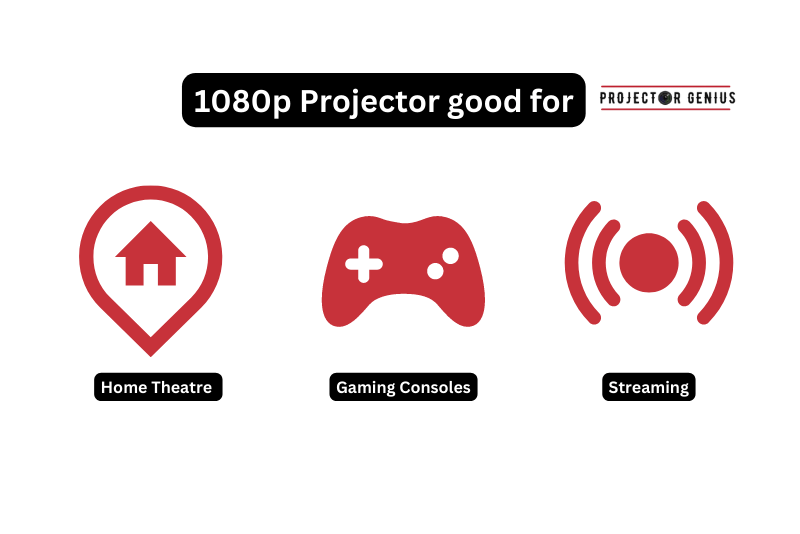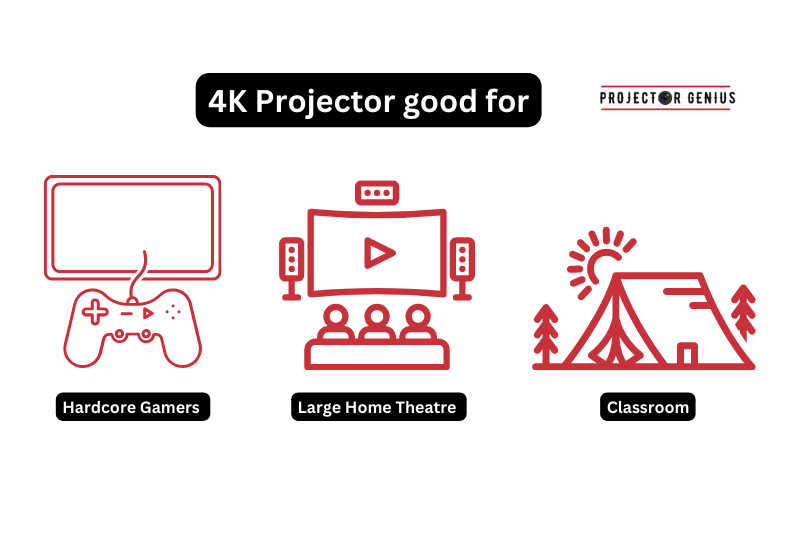1080p vs 4K: Which Is Right For You In 2023?
-
 Written by:
Kristy Roger
Written by:
Kristy Roger
- Last Updated:
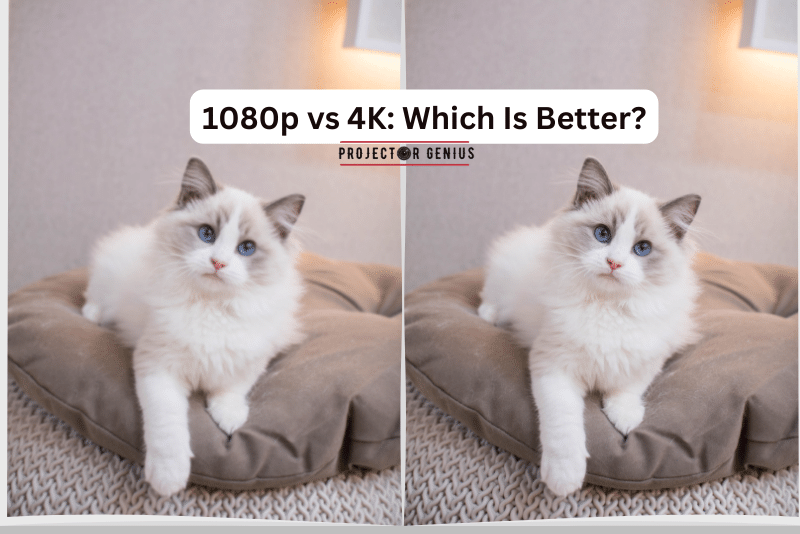
So, you’re wondering which is the best FHD(1080p) or 4K.
Throughout this article, I’ll talk you through the detailed knowledge of 4K and FHD(1080p). I’ll also help you decide which Resolution works best for you.
Let’s start the comparison of 1080p vs 4K with images and a step-by-step guide.
1080p vs 4k projector? A 4K projector offers a much higher resolution than a 1080p projector, with four times the number of pixels, resulting in sharper, more detailed, and more immersive visuals. If you’re looking for the best possible image quality, especially for larger screens, a 4K projector is the superior choice, although it may come at a higher cost.
I recommend using the Table of Contents to quickly access the information you need.
My article is designed to cater to home cinema users of all levels, from Beginners to Advanced enthusiasts.
Table of Contents
What is 1080p and 4K?
1080p and 4K refer to different display resolutions commonly used in HDTV high-definition video, digital television, digital cinematography, movie projection, digital cameras, computer monitors, and more.
1080p (FHD)
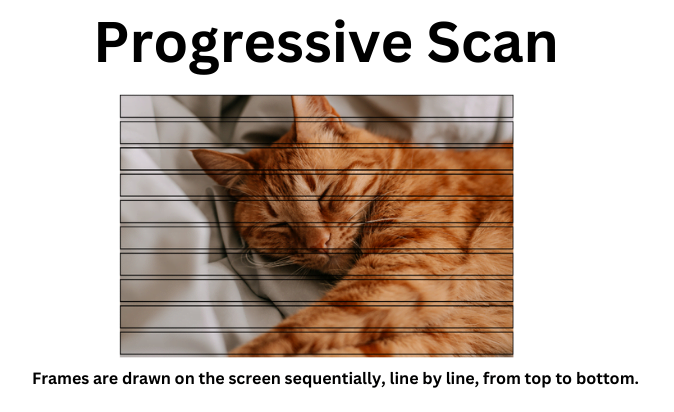
It is also known as Full HD or FHD, and it has a resolution of 1920×1080 pixels. The “p” stands for progressive scan, which means the image is drawn on the screen progressively, line by line, creating a smooth and detailed picture. It is a widely used resolution for TVs, projectors, computer monitors, and video game consoles.
4K Resolution
It is a higher resolution also known as Ultra High Definition (UHD), with a resolution of 3840×2160 pixels. The term “4K” comes from the horizontal pixel count, which is approximately 4,000 pixels wide. Like 1080p, it is also a progressive scan resolution, providing even more detail and clarity on larger screens.
These resolutions have become increasingly popular with the rise of digital media, streaming platforms like YouTube and Netflix, and the adoption of high-quality display technologies in smartphones, televisions, projectors, cameras, and other devices.
1080p vs 4K: What’s the Difference Between a 1080p and a 4K Projector?
The main difference between a 1080p and a 4K projector lies in their display resolution and the level of detail they can present in the projected images.
Resolution
As mentioned earlier, a 1080p projector has a resolution of 1920×1080 pixels, while a 4K projector boasts a higher resolution of 3840×2160 pixels. The 4K resolution provides four times the number of pixels compared to 1080p, resulting in a much sharper and more detailed image.
Pixel Density
A 4K projector has a higher pixel density, meaning it can display more pixels per inch on the screen. This higher pixel density translates to smoother edges and finer details in the images projected, making the viewing experience more immersive and lifelike.
Image Quality
Due to the increased pixel count and pixel density, 4K projectors can reproduce images with greater clarity, richer colors, and better contrast compared to 1080p projectors. The difference is especially noticeable on larger screens or when watching content with intricate details.
Screen Size
While both projectors can be used with various screen sizes, the advantage of 4K becomes more evident when projecting on larger screens. With a bigger display area, the higher resolution ensures that the image remains crisp and clear, whereas a 1080p projector might show some pixelation or lack of detail on larger screens.
Content Compatibility
As of now, most content is still produced in 1080p or lower resolutions. While 4K content is becoming more prevalent, it might not be as widely available as 1080p content. However, 4K projectors can upscale lower-resolution content to fit their higher resolution, resulting in a generally improved image quality.
Price
4K projectors tend to be more expensive than 1080p projectors due to the advanced technology and higher manufacturing costs associated with producing higher-resolution displays.
In summary, the primary advantages of a 4K projector over a 1080p projector are its higher resolution, pixel density, and overall image quality. However, the choice between the two depends on factors such as budget, screen size, availability of 4K content, and personal preferences for image quality.
Which One Offers Better Image Quality: 1080p or 4K?

A 4K projector offers better image quality compared to a 1080p projector. The higher resolution of 3840×2160 pixels in 4K projectors results in a significant improvement in image clarity, sharpness, and overall detail.
With four times the number of pixels as a 1080p projector, a 4K projector can display images with finer details and smoother edges, providing a more immersive and lifelike viewing experience. This higher pixel density also allows for more precise color reproduction and better contrast, resulting in richer and more vibrant images.
The difference in image quality between the two becomes more noticeable when projecting on larger screens, as the increased resolution of 4K ensures that the image remains crisp and clear, whereas a 1080p projector might show some pixelation or lack of detail on larger displays.
While both types of projectors can offer impressive visuals, especially when viewing content in their native resolutions, a 4K projector undoubtedly delivers superior image quality, making it a preferred choice for those seeking the best possible viewing experience. However, it’s essential to consider factors like content availability, budget, and screen size when making a decision between 1080p and 4K projectors.
Is the Visual Difference Noticeable Between 1080p and 4K Projectors?
Yes, the visual difference between 1080p and 4K projectors is noticeable, especially under certain conditions. When viewing the content in their native resolutions, the improvement in image quality provided by a 4K projector is quite evident.
The higher resolution of 3840×2160 pixels in a 4K projector allows for sharper, more detailed images compared to a 1080p projector’s 1920×1080 pixel resolution. This is especially noticeable when projecting on larger screens, as the increased pixel density of 4K ensures that the image remains clear and crisp, whereas a 1080p projector might show some pixelation or lack of detail on larger displays.
The difference is most apparent when viewing content that is specifically mastered or optimized for 4K resolution, such as 4K Blu-ray discs or streaming content in 4K. In such cases, the higher resolution of a 4K projector will showcase the content’s finer details, textures, and overall image clarity more effectively.
However, it’s worth noting that the degree of visual difference also depends on various factors such as the viewing distance, screen size, content source, and individual perception. When sitting at a typical viewing distance for home theater setups, the difference may be more subtle, especially for smaller screen sizes. Additionally, if the content being projected is not in native 4K resolution and has been upscaled, the visual improvement may be less pronounced compared to native 4K content.
Does a 4K Projector Cost Significantly More than a 1080p One?
Yes, 4K projectors generally cost significantly more than 1080p projectors. The higher resolution and advanced technology used in 4K projectors contribute to their higher manufacturing costs, which are reflected in their price tags.
The price difference between 1080p and 4K projectors can vary based on the brand, model, features, and specifications. On average, a 4K projector can be two to three times more expensive than a comparable 1080p projector with similar features.
However, it’s important to note that technology advances rapidly, and over time, the prices of 4K projectors have been gradually decreasing as the technology becomes more accessible. As a result, the price gap between 4K and 1080p projectors may have reduced somewhat since my last update.
Additionally, the market offers a wide range of projector options, and there might be budget-friendly 4K projectors available, although they might lack some high-end features or have slightly lower image quality compared to more expensive models.
When considering the purchase of a projector, it’s essential to weigh the benefits of the improved image quality and resolution that a 4K projector offers against your budget and the specific needs of your setup.
If image quality is a top priority and you can afford the higher cost, a 4K projector might be the ideal choice for a more immersive viewing experience. However, a 1080p projector can still provide excellent visual performance at a more affordable price point.
Can a 4K Projector Display Content in 1080p Resolution?
Yes, a 4K projector can display content in 1080p resolution. In fact, most 4K projectors are designed to be backward compatible, meaning they can handle lower-resolution content, including 1080p, with ease.
When you play a 1080p video or connect a 1080p source (such as a Blu-ray player or gaming console) to a 4K projector, the projector will automatically scale the content to fit its native 4K resolution. This process is known as upscaling.
During upscaling, the projector uses algorithms to interpolate and add additional pixels to the 1080p image, so it fits the higher resolution of the 4K display. While upscaling cannot add true 4K detail that wasn’t in the original 1080p source, it can enhance the visual quality by reducing pixelation and making the image appear smoother on the larger 4K screen.
As a result, even when displaying 1080p content on a 4K projector, you can still expect a decent viewing experience. However, the visual improvement won’t be as dramatic as viewing native 4K content, as upscaling cannot reproduce the level of detail and clarity that native 4K content offers.
Nonetheless, this backward compatibility is convenient because it allows users to enjoy their existing collection of 1080p content while having the option to watch native 4K content when available, making 4K projectors versatile devices for various content sources.
What are the Connectivity Options and Compatibility Differences Between the Two Projectors?
Both 1080p and 4K projectors generally offer a range of connectivity options to accommodate various devices and content sources. The main connectivity options are quite similar for both types of projectors, but there might be some subtle differences in compatibility due to the varying resolutions they support.
Common Connectivity Options for Both 1080p and 4K Projectors Include:
HDMI (High-Definition Multimedia Interface)
HDMI is the most common and widely used connection for projectors. Both 1080p and 4K projectors typically come with HDMI ports that allow you to connect various devices like Blu-ray players, gaming consoles, laptops, streaming devices, and more. HDMI cables can transmit high-quality audio and video signals.
VGA (Video Graphics Array)
VGA is an older video connection standard that is still found on some projectors, especially budget-friendly models. However, VGA is not commonly found on 4K projectors due to its limited resolution support.
USB
USB ports on projectors can be used for powering streaming devices like Chromecast or Roku sticks, as well as for playing media files directly from a USB flash drive.
Audio Jacks
Both 1080p and 4K projectors often have audio input and output jacks, allowing you to connect external speakers or audio systems for better sound quality.
Now, when it comes to compatibility differences, the primary distinction lies in the resolution support:
1080p projectors
These projectors are optimized for displaying content in 1080p resolution. They may support lower resolutions like 720p or standard definition (SD) content, but they might not handle 4K content natively. If you connect a 4K source to a 1080p projector, it will either downscale the image to fit its native resolution or not display the content at all.
4K projectors
These projectors are designed to support native 4K resolution. They are generally backward compatible and can display lower-resolution content, such as 1080p, through upscaling. As mentioned earlier, 4K projectors can upscale lower-resolution content to fit their native 4K resolution, allowing you to enjoy your existing 1080p content with decent quality.
It’s worth noting that advancements in technology have made modern 4K projectors more versatile and compatible with various input sources.
However, it’s essential to check the specific connectivity options and compatibility details of the projector model you’re interested in to ensure it meets your needs and works well with your devices.
Is it Worth Upgrading to a 4K Projector for a Better Viewing Experience?
Whether upgrading to a 4K projector for a better viewing experience is worth it depends on several factors, including your budget, the size of your screen, the content you watch, and your overall viewing preferences.
Here are some points to consider:
Budget
4K projectors generally come with a higher price tag than 1080p projectors. If budget constraints are a significant concern, you might want to weigh the cost of the upgrade against the perceived benefits of improved image quality.
Screen Size
If you have a large projection screen or plan to get one, a 4K projector can make a noticeable difference in image quality. The higher resolution ensures that the image remains crisp and detailed, even on larger screens.
Content Availability
Consider the availability of 4K content that you regularly watch. While 4K content is becoming more prevalent, it might not be as widely available as 1080p content. If most of your content is in 1080p or lower resolutions, the visual improvement on a 4K projector might not be as significant when viewing non-4K content.
Viewing Distance
The difference in image quality between 1080p and 4K projectors may be more noticeable at closer viewing distances. If you sit relatively close to the screen during your viewing sessions, a 4K projector can provide a more immersive and detailed experience.
Future-Proofing
Investing in a 4K projector could be considered a form of future-proofing, as 4K content continues to gain popularity and becomes more widely available. By opting for a 4K projector, you ensure compatibility with upcoming 4K content and technology advancements.
Personal Preference
Ultimately, the decision to upgrade to a 4K projector depends on your personal preferences and how much you value the potential improvement in image quality. Some people might be content with the visual performance of a good-quality 1080p projector, while others may prioritize the enhanced viewing experience that a 4K projector offers.
In summary, if you have the budget and enjoy watching content on a large screen, a 4K projector can deliver a more immersive and visually appealing experience, especially with native 4K content. However, for smaller screens and limited access to 4K content, a 1080p projector might still provide an excellent viewing experience at a more affordable price point. Ultimately, the decision should align with your preferences, viewing habits, and future expectations for content and technology.
How Does the Brightness and Color Performance Differ Between 1080p and 4K Projectors?
The brightness and color performance can vary between 1080p and 4K projectors based on the specific models and technologies used. Here’s a general overview of how they might differ:
Brightness:
Brightness, measured in lumens, determines how well a projector can produce a visible image in different lighting conditions. It’s an important factor, especially for home theaters or spaces with ambient light.
Both 1080p and 4K projectors come in various brightness levels, ranging from entry-level models suitable for dark rooms to high-brightness projectors for rooms with more ambient light.
The brightness of a projector is not inherently tied to its resolution. You can find both bright 1080p and 4K projectors. The brightness level is determined by the projector’s light source and optical design.
Color Performance:
Color performance refers to how accurately a projector can reproduce colors and the overall color vibrancy of the projected images.
Both 1080p and 4K projectors can offer excellent color performance, but higher-end models tend to have better color accuracy and wider color gamuts.
Some 4K projectors feature advanced color technologies, such as high dynamic range (HDR), wider color gamuts (e.g., DCI-P3 or Rec. 2020), and color calibration options, which contribute to superior color reproduction.
4K projectors might have an advantage in color performance due to their typically higher-quality components and advanced image processing capabilities. However, this varies depending on the specific projector model and manufacturer.
It’s important to note that both brightness and color performance are aspects that can differ significantly between individual projector models, regardless of their resolution. When considering a projector, be sure to review its specifications, read reviews, and ideally, see a demonstration in person to assess its brightness and color performance.
Additionally, factors like screen type and quality, room lighting conditions, and proper calibration can also influence the overall brightness and color performance of a projector, so it’s essential to consider the entire setup when aiming for the best visual experience.
Can a 1080p Projector Display Content in 4K Resolution?
No, a 1080p projector cannot display content in native 4K resolution. A 1080p projector has a maximum resolution of 1920×1080 pixels, and it is not capable of producing the higher resolution of 3840×2160 pixels required for 4K content.
When you connect a 4K source (such as a 4K Blu-ray player or streaming device) to a 1080p projector, the projector will either downscale the content to fit its native 1080p resolution or not display the 4K content at all.
Downscaling means that the 1080p projector will convert the 4K content to its lower resolution, resulting in a loss of detail and image quality. While the content will still be viewable, you won’t experience the full benefits of native 4K resolution on a 1080p projector.
If you want to enjoy 4K content in its full resolution, you would need a 4K projector capable of handling the higher pixel count and displaying content in its native 4K resolution.
Are There Any Specific Scenarios Where a 1080p Projector is Preferred Over a 4K One?
Yes, there are specific scenarios where a 1080p projector might be preferred over a 4K one. While 4K projectors generally offer better image quality, there are situations where a 1080p projector can still be a suitable and practical choice:
Budget Constraints
If you have a limited budget, 1080p projectors tend to be more affordable than 4K projectors. Opting for a 1080p projector can allow you to save money without compromising on the overall viewing experience.
Smaller Screen Size
If you have a relatively small projection screen, the difference in image quality between 1080p and 4K might not be as noticeable. For smaller screen sizes, the benefits of 4K resolution might not be fully realized, making a 1080p projector a cost-effective choice.
Limited 4K Content
If most of your content library consists of 1080p or lower-resolution media and you don’t plan to invest in a lot of native 4K content, a 1080p projector can provide excellent visual performance for your existing media.
Casual Viewing
If you primarily use the projector for casual viewing, such as watching TV shows, sports events, or general entertainment, a 1080p projector can provide a satisfying viewing experience without the need for the higher resolution of 4K.
Easier Setup and Installation
1080p projectors often have lower power consumption and produce less heat compared to 4K projectors. This might result in quieter operation and may not require as robust cooling systems, making installation and setup more straightforward.
Temporary or Portable Setup
If you plan to use the projector for temporary setups, outdoor movie nights, or presentations, a portable 1080p projector can be a practical choice due to its lower weight and easier portability.
Are There Differences in Screen Size or Distance Requirements for 1080p and 4K Projectors?
In general, there are no specific differences in screen size or distance requirements between 1080p and 4K projectors. Both types of projectors can be used with a wide range of screen sizes and viewing distances, and the requirements are not inherently tied to the projector’s resolution.
Here are Some Considerations for Both 1080p and 4K Projectors:
Screen Size
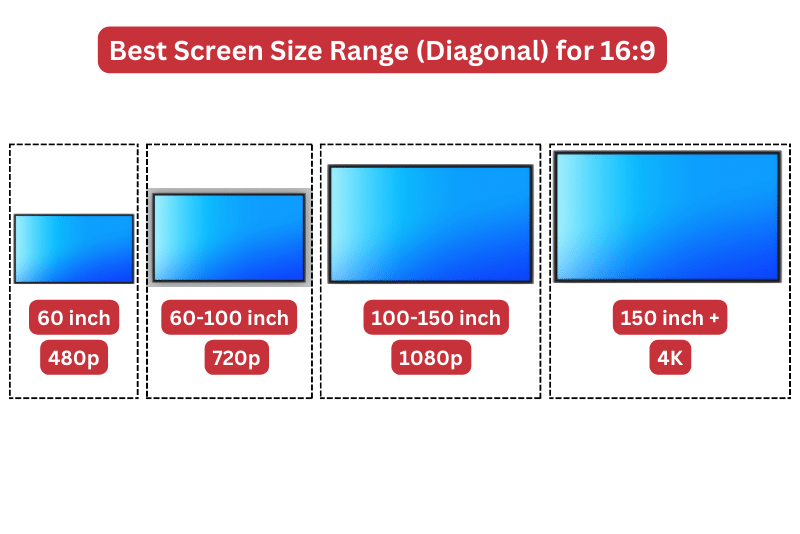
Both 1080p and 4K projectors can be used with various screen sizes, ranging from small screens for personal use to large screens for home theaters or commercial setups. The ideal screen size depends on the projector’s brightness, the ambient light in the room, and how immersive you want the viewing experience to be.
Viewing Distance
The viewing distance refers to how far the audience is seated from the screen. For both 1080p and 4K projectors, the optimal viewing distance depends on the screen size and the resolution of the content being projected. As a general rule, a closer viewing distance allows for more detailed perception, but it should still be comfortable for the viewer.
Resolution and Content
The projector’s resolution (1080p or 4K) affects the level of detail and clarity in the projected image but does not dictate specific screen sizes or viewing distances. Regardless of the projector’s resolution, the content being projected should ideally match or closely match the projector’s native resolution for the best visual experience.
Projector Specifications
The projector’s specifications, including its throw ratio, zoom range, and lens shift capabilities, can influence the screen size and distance requirements. For example, some projectors may have short-throw lenses suitable for smaller rooms, while others are designed for larger spaces.
Room and Lighting Conditions
Consider the ambient light in the room where the projector will be used. Higher projector brightness is beneficial for rooms with more ambient light, while darker environments can allow for larger screen sizes without sacrificing image quality.
How do These Projectors Handle Various Content Sources, Such as Streaming, Gaming, or Blu-ray Movies, in 1080p and 4K?
Both 1080p and 4K projectors can handle various content sources, including streaming, gaming, and Blu-ray movies, but there are some differences in how they handle different resolutions:
Streaming
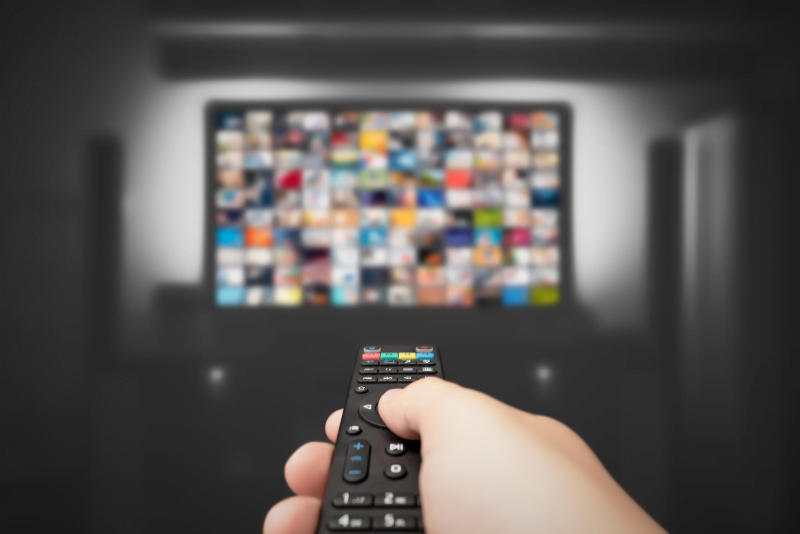
Both 1080p and 4K projectors can display streaming content, but their performance may vary depending on the source and the projector’s native resolution.
1080p Projector – A 1080p projector can display streaming content in its native resolution (up to 1080p) with excellent clarity and detail. It can handle lower-resolution streaming content, such as 720p, as well, providing a good viewing experience.
4K Projector – A 4K projector can display streaming content in its native resolution (up to 4K) with higher image quality and sharper details. When streaming lower-resolution content, a 4K projector will upscale the image to fit its 4K resolution. While upscaling can enhance the quality of the content, it won’t add true 4K detail that wasn’t in the original source.
Gaming

Both 1080p and 4K projectors can be used for gaming, but there are some considerations for each:
1080p Projector – A 1080p projector is suitable for gaming, especially for consoles that output games in 1080p resolution. It provides a smooth and immersive gaming experience, and many gaming consoles are optimized for 1080p displays.
4K Projector – A 4K projector can offer enhanced gaming experiences, especially with gaming consoles that support 4K resolution or upscale to 4K. Native 4K games can be displayed with superior image quality and finer details, but some consoles may dynamically switch to 1080p or lower resolution in certain situations to maintain performance.
Blu-ray Movies
Blu-ray movies are typically produced in 1080p resolution. Both 1080p and 4K projectors can display Blu-ray movies effectively:
1080p Projector – A 1080p projector can display Blu-ray movies in their native resolution with excellent image quality and cinematic experience.
4K Projector – A 4K projector can also display Blu-ray movies in their native resolution (1080p) and upscale them to 4K. While the visual improvement won’t be as dramatic as with native 4K content, the upscaling can still enhance the image quality.
Does the Type of Content Impact the Choice Between 1080p and 4K Projectors?
Yes, the type of content you primarily consume can impact the choice between 1080p and 4K projectors. Different types of content have varying resolutions and levels of availability, and considering your content preferences can help you make a more informed decision:
Native 4K Content
If you frequently watch or plan to watch native 4K content, such as 4K Blu-ray movies, streaming services with a vast library of 4K content, or 4K video games, a 4K projector would be a more suitable choice. A 4K projector can display native 4K content with its full resolution and provide an immersive and detailed viewing experience.
Mixed Content
If you consume a mix of content, including both 1080p and 4K sources, a 4K projector can be a versatile option. A 4K projector can upscale lower-resolution content to fit its higher resolution, providing a visual improvement compared to native 1080p projection. This way, you can enjoy your existing 1080p content while also benefiting from the enhanced image quality of native 4K sources.
Mostly 1080p or Lower Resolution Content
If most of your content library consists of 1080p or lower-resolution media, and you don’t anticipate regularly watching or acquiring native 4K content, a 1080p projector can offer an excellent viewing experience at a more budget-friendly price. Investing in a 4K projector might not be necessary if you won’t fully utilize its native 4K capabilities.
Budget Considerations
Budget is a crucial factor in choosing a projector. If a 4K projector stretches your budget significantly, and you prioritize cost-effectiveness over native 4K resolution, a good-quality 1080p projector can still provide a satisfying viewing experience for various content types.
Future Content Trends
Consider the future trends in content production and distribution. As more content becomes available in 4K resolution, a 4K projector can be a more future-proof investment, ensuring compatibility with upcoming 4K content releases.
Can a 1080p Projector Upscale Content to 4K, and How Does it Compare to a Native 4K Projection?
Yes, a 1080p projector can upscale content to 4K, but the upscaling process cannot replicate the true level of detail and clarity found in native 4K projection.
When a 1080p projector upscales content to fit its 1920×1080 resolution to 3840×2160 (4K) resolution, it uses algorithms to interpolate additional pixels. While upscaling can enhance the image quality compared to native 1080p projection, it cannot match the level of sharpness and detail that a native 4K projection offers.
Native 4K projectors have a higher pixel count and pixel density, resulting in superior image quality, sharper details, and more realistic visuals compared to upscaled content on a 1080p projector.
In short, while upscaling can provide a modest improvement in image quality on a 1080p projector, native 4K projection delivers a noticeably better and more immersive viewing experience with its higher resolution and enhanced detail.
How Does the Resolution Impact the Power Consumption and Lamp Life of the Projector, in 1080p and 4K Models?
In general, higher resolution projectors, such as 4K models, tend to consume more power than lower resolution ones, like 1080p models. The increased resolution requires more processing power and higher data throughput, leading to higher energy usage.
Additionally, the higher resolution and pixel density in 4K projectors may result in slightly increased heat generation, which can also contribute to higher power consumption compared to 1080p projectors.
Regarding lamp life, the impact of resolution on projector lamps is not significant. Lamp life is primarily affected by factors such as lamp type, usage patterns, and projector settings, rather than the resolution itself. Both 1080p and 4K projectors use various types of lamps (e.g., LED, DLP, or laser), and their lamp life can vary depending on the specific model and usage conditions.
Final Thoughts on 1080p vs 4K
The choice between a 1080p and a 4K projector depends on factors like budget, screen size, content preferences, and future needs. A 4K projector offers superior image quality with higher resolution, making it ideal for larger screens and native 4K content. However, a 1080p projector can still provide an excellent viewing experience at a more affordable price, especially for smaller screens and mixed-resolution content. Both projectors handle various content sources well, and the decision ultimately hinges on personal preferences and usage scenarios, with both options capable of delivering immersive and enjoyable visuals for a variety of entertainment needs.
Author of this Post:

Kristy Roger
Home Cinema Consultant & Tech Enthusiast
Holding a background in Industrial and Electrical Technology from the University of Alberta, Kristy has spent 5+ years consulting on home theater products at a top electronics firm. As a certified Technical Professional with Lean Six Sigma credentials, Kristy expertise ranges from projector nuances to hands-on experience with leading models. Kristy have been sharing her knowledge online for two years, blending professional insights with personal experiences from her own home cinema setup. Off the screen, She is a dedicated mom to Jerry, Ryan, and our two pups, Cuddle and Paw.

